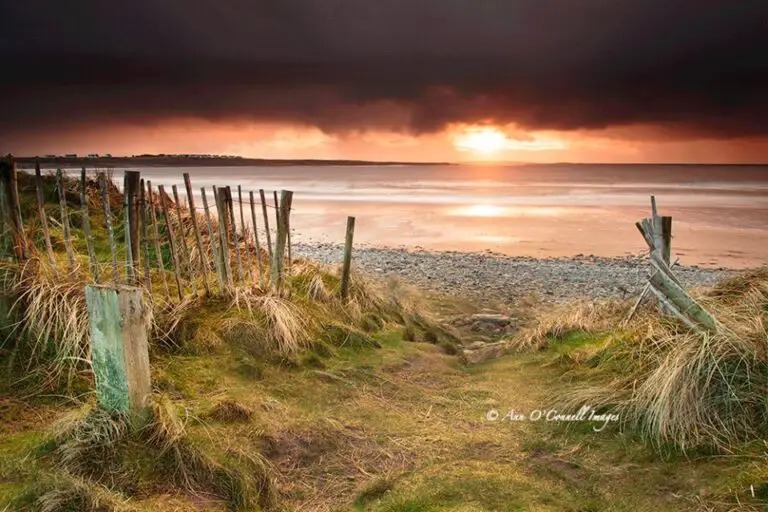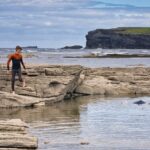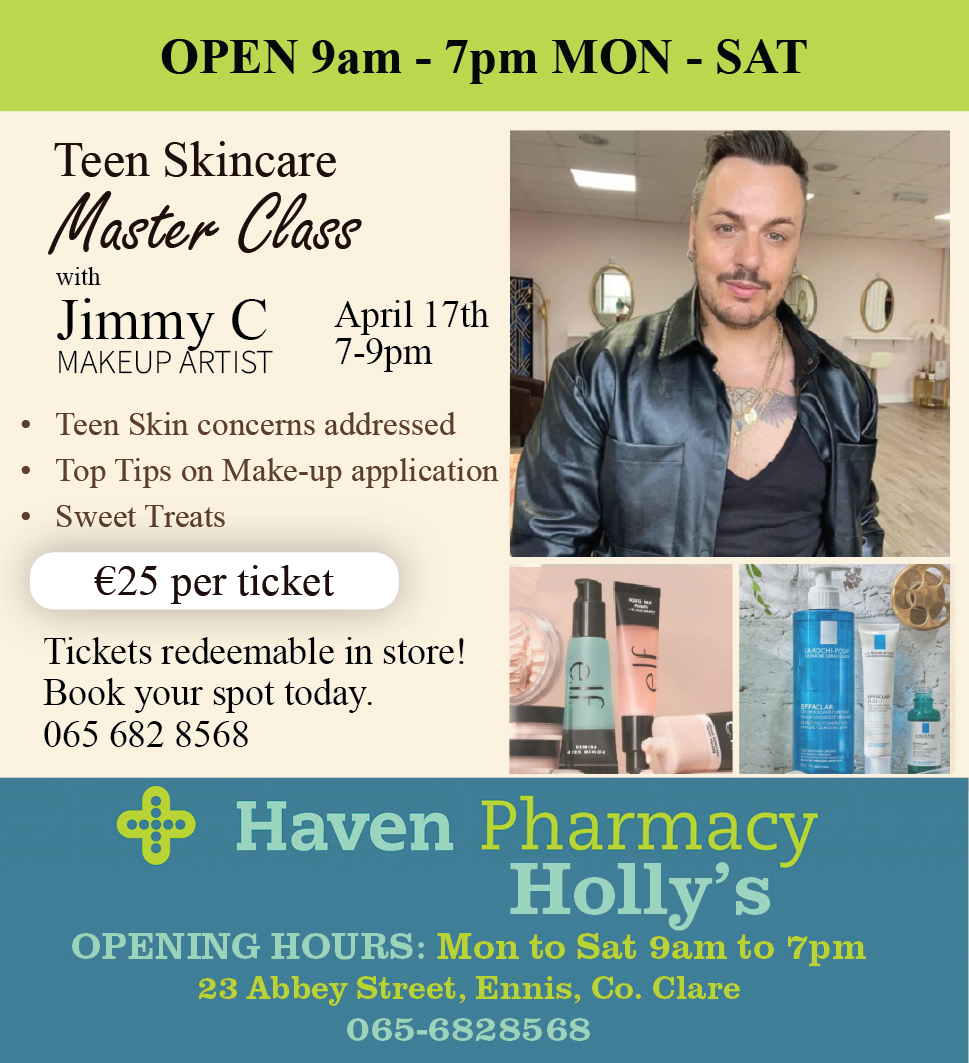*Photograph: Ann O’Connell.
MEMBERS OF THE PUBLIC are being advised to take extreme caution by the Clare coast over the coming days following ‘a near miss’ on Monday night.
On Monday evening, a “seriously dangerous” rip current at Spanish Point almost caused a fatality. Lifeguards had been active across the day warning swimmers of the potential danger, at the conclusion of their shift at 7pm one lifeguard travelled along the beach with a megaphone advising the public of the dangers of the current.
Rip currents are the leading surf hazard for all beachgoers. They are particularly dangerous for weak or non-swimmers. Rip current speeds are typically 1-2 Kmph. However, speeds as high as 8 Kmph have been measured. Thus, rip currents can sweep even the strongest swimmer out to sea. Rip currents can occur at any surf beach with breaking waves.
A rip current is a narrow, powerful current of water running perpendicular to the beach, out into the ocean. These currents may extend 200 to 2,500 feet (61 to 762 m) lengthwise, but they are typically less than 30 feet (9 m) wide. In the United States, rip currents are responsible for an approximate 150 deaths every year, in Florida, they kill more people annually than thunderstorms, hurricanes and tornadoes combined. They are the number-one concern for beach lifeguards with an estimated 80 percent of all beach rescues related to rip currents.
Approximately 100 people were swimming in Spanish Point when two ex lifeguards and local surfers, Oisin McGrath and Neil Acheson came to the rescue of one man who got caught in the rip current and was on his last few breaths, in a half hour period three people alone ran into difficulty.
Patrick Keane of Whitewater Surf Company in Spanish Point told The Clare Echo were it not for their efforts “you would be definitely looking at a loss of life. They hung around and so did we warning people, 20 to 30 more people could have been caught if we didn’t”.
He described the rip current as “particularly strong” up through the middle of the beach and commended the lifeguards for their efforts this week, “The lifeguards do a fantastic job, they are earning their keep, it is super dangerous yet still some people don’t want to listen, we’re here till dark every evening. It is a really dangerous situation and ironically it is at its worst when the lifeguards are off duty”.
“It has been packed here all day every day this week, a lot of people are not familiar with the sea or the current, to the untrained eye the current looks very attractive and very calm but that is far from the case,” Patrick explained.
By Monday of next week, it is expected that conditions will return to some semblance of normality in the sea. “This particular danger will have passed and it will be back to normal service. The tides will change, it can be of this nature, it has its time and this is it. That said, it will be dangerous still next week. Whatever it is, it appears that beaches are very dangerous this summer, Ballybunnion and Fanore have had their incidents, there was a rescue at Doonbeg this week,” he added.
Keane was hopeful visitors and locals would pay heed to the concerns raised. “More and more people are using the sea recreationally nowadays, there are different races and nationalities that are unfamiliar with the sea and the locality. These rescues are becoming more common, a lot of surfers are around and doing rescues with not a word about it”. He continued, “there is a broader educational piece about it. It should be a case that kids when they get to sixth class are exposed to such a level of water safety information that this isn’t happening. It is very rare that an Australian would walk into a rip current for example”.


















